A multidisciplinary, comprehensive clinic,
geared to treat, research, and prevent the array
of symptoms known as “Post-Mastectomy
Pain Syndrome”
Treatment Components
Physical Therapy
Physical therapy can improve soft tissue mobility, minimize and release scar tissue, and strengthen muscles

Women suffering from Post-Mastectomy Pain Syndrome may have elements of reduced mobility, flexibility, and strength, that may contribute to the cycle of pain.
Focused physical therapy may reverse these effects, and may help reduce scar tissue formation around injured nerves, that may also play a role in the syndrome.
Pre-operative physical therapy is recommended to optimize the body’s condition prior to the stressors of surgery. It undoubtedly is an important part of any surgical recovery. Aerobic activity, stretching, and strengthening help decrease recovery time, improve functional ability, and may help in reducing the incidence of chronic pain after surgery.
For women recovering from breast cancer, physical therapy is prescribed post-surgery for several reasons: soft tissue mobility (muscle, fascia, tendons, ligaments), scar tissue minimization and release, and muscle strengthening.
Therapy is administered by a physical therapist dedicated to breast cancer treatment, as part of the multi-specialty team.
Pain Management
A breast pain specialist can prescribe a tailored regimen for patient suffering from PMPS

A multimodal regimen is instituted to reduce postoperative pain. The regimen is designed to reduce the amount of narcotic medications prescribed, thus reducing the risk of opioid dependance. Low doses of drugs, that are synergistic and safe to combine, are given prior to surgery. They are also used during, and immediately after surgery.
This is a well proven method to decrease postoperative pain and side effects. Prevention of significant postoperative pain may reduce the likelihood of developing chronic pain.
Some of the medications used are: acetaminophen, non-steroidal anti inflammatory drugs, neuromodulators, low dose opioids, and cannabinoids.
Patients that have chronic pain following mastectomy, are treated by a breast pain specialist that can prescribe a tailored regimen, as part of the multidisciplinary approach.
Regional Anesthesia
If oral pain medications fail to fully address PMPS, patients may be treated with local anesthetics

Oral pain medications may not alleviate chronic post mastectomy pain issues. In these instances patients may be treated with local or regional anesthetic interventions.
These modalities are best used if specific areas can be pinpointed upon examination, or if injured nerves can be identified with the use of medical imaging (EMG, ultrasound, CT, or MRI.)
Other causes of chronic pain should be considered and managed. Treatments that can be employed include: local anesthetic injections, steroid injections, regional nerve blocks, and implantable nerve stimulators.
An expert in interventional pain management works conjunction with the comprehensive treatment group, to apply the appropriate care as indicated.
Reparative Surgery
A surgical approach is considered after nonsurgical modalities to treat chronic PMPS have been exhausted

After nonsurgical modalities to treat chronic post-mastectomy pain have been maximized , a surgical approach is considered.
If trigger points are identified on physical exam that have not responded to less invasive treatment, the assumption is that a trapped nerve (or multiple nerves) are creating a constant painful stimulus.
These problematic nerve endings may be surgically addressed. There are several surgical options for treatment of entrapped, scarred, or abnormal nerve endings.
The initial steps involve surgical identification of the problem site, and release of the nerve until a normal segment is reached. At this point, the abnormal nerve ending is removed. The freshly cut nerve ending is then managed by one of three ways: “replantation” into surrounding body tissue, “capping” using a special nerve cap, and “reconnection” to a nerve graft.
Testimonials
Chronic Pain after Mastectomies, Implants Changed to Above the Muscle with Nerve Reconstruction
Chronic Pain after Mastectomies, Implants Exchanged for Innervated TUG Flaps
Chronic Pain after Breast Reduction
Post-Mastectomy Pain Syndrome
Breast cancer affects one in eight women across the United States. In 2020, an estimated 276,480 new cases of invasive breast cancer are expected to be diagnosed, along with 48,530 new cases of non-invasive (in situ) breast cancer. As of January 2020, there are more than 3.5 million women with a history of breast cancer in the U.S. This includes women currently being treated and women who have finished treatment. Mastectomy is part of the treatment in up to 40% of cases. Of that, up to 30% will develop Post-Mastectomy Pain Syndrome (PMPS.)
We believe that a major cause of chronic post-mastectomy pain is related to surgical injury to sensory nerves in the breast and chest area. This occurs as part of standard mastectomy today and is considered acceptable. Our experience has shown us that appropriate nerve handling during the mastectomy may avoid the problem altogether. It is difficult to manage the repercussions of nerve damage in the chest, breast, and axillary (armpit) area. There are specialists that focus on management of nerve damage elsewhere in the body (arms, legs, head.) However, this is an under-addressed area in terms of diagnosis, treatment, and prevention in the breast.
Breast Relief℠ is a unique clinical and research initiative, geared towards addressing and preventing PMPS. By diagnosing patients, systematically treating them, and educating healthcare and patient communities, we ultimately aim to shift paradigms in surgical treatment of breast cancer.
At NYBRA Plastic Surgery we operate on hundreds of women per year, and on occasional encounter patients that suffer from PMPS. Breast Relief℠ is our way of addressing this issue.

